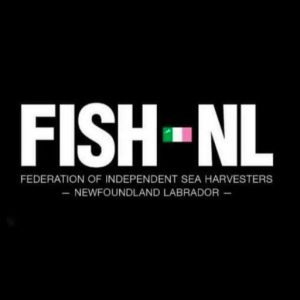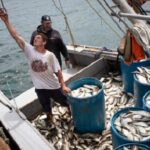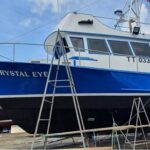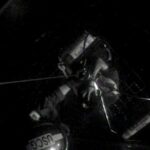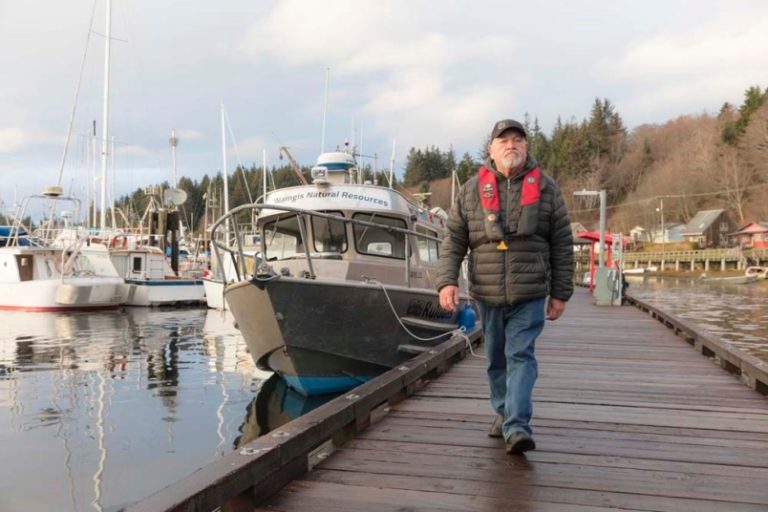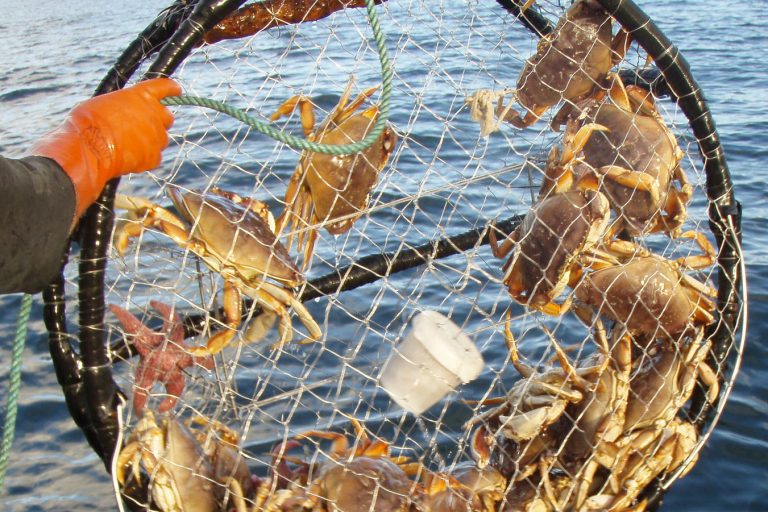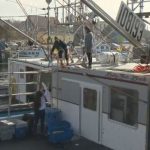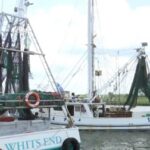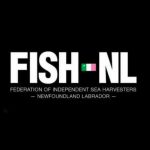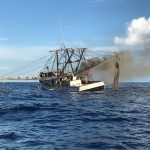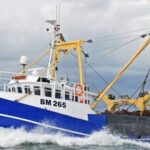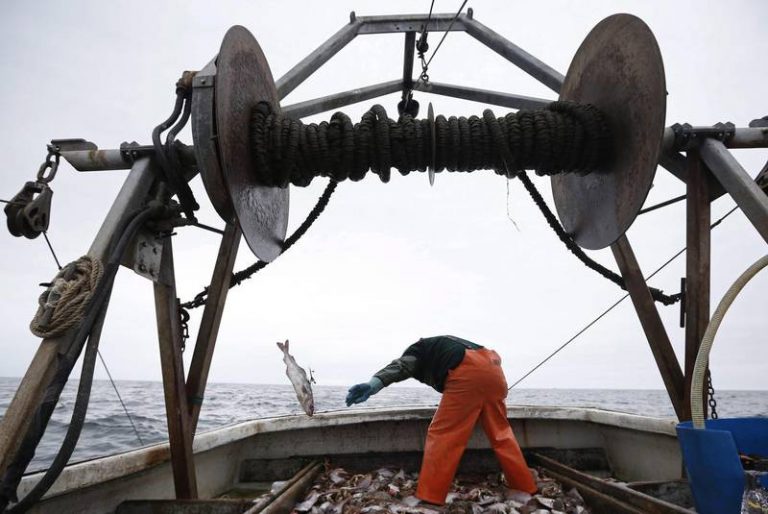Daily Archives: December 16, 2016
No Catch Shares! Gulf rationalization dies a quiet death
 Gulf of Alaska groundfish will remain an open access fishery indefinitely after the North Pacific Fishery Management Council tabled a policy package that has enraged fishermen of all stripes over the last year. Depending on who is asked, the council acted at either its best or its worst with the decision. “The council process didn’t work. They didn’t solve the problem,” said Julie Bonney, executive director of the Groundfish Forum, an industry group of trawlers and processors. “They just took the political part first and ignored the management. I have to keep reminding myself, this isn’t about management. It’s about politics.” Others said the council did exactly what it should have done in the face of so many contentious decisions on which so many people expressed opinions. “I think this is actually the best illustration of council process, rather than the worst,” said Duncan Fields, a Kodiak attorney and former council member who was among the most vocal on this subject. “It shows that one gear group with a particular ideology and particular economic interest with very good advocates can’t just jam something through the council,” he said. “The council allows other participants, small boat fishermen, community, stakeholders to also have a voice, and that voice has said a catch share program is not the best public policy. You don’t always get the result you want.” Read the rest here 20:39
Gulf of Alaska groundfish will remain an open access fishery indefinitely after the North Pacific Fishery Management Council tabled a policy package that has enraged fishermen of all stripes over the last year. Depending on who is asked, the council acted at either its best or its worst with the decision. “The council process didn’t work. They didn’t solve the problem,” said Julie Bonney, executive director of the Groundfish Forum, an industry group of trawlers and processors. “They just took the political part first and ignored the management. I have to keep reminding myself, this isn’t about management. It’s about politics.” Others said the council did exactly what it should have done in the face of so many contentious decisions on which so many people expressed opinions. “I think this is actually the best illustration of council process, rather than the worst,” said Duncan Fields, a Kodiak attorney and former council member who was among the most vocal on this subject. “It shows that one gear group with a particular ideology and particular economic interest with very good advocates can’t just jam something through the council,” he said. “The council allows other participants, small boat fishermen, community, stakeholders to also have a voice, and that voice has said a catch share program is not the best public policy. You don’t always get the result you want.” Read the rest here 20:39
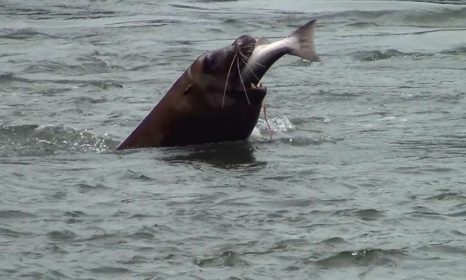
Early action key to reducing sea lion impacts on Bonneville Dam salmon
A new study used the same kind of models that scientists use to track disease to instead examine how some California sea lions have learned to prey on salmon gathering to ascend fish ladders at Bonneville Dam. Although sea lions commonly feast on fish, their predation on salmon at Bonneville Dam on the Columbia River poses wildlife management challenges. The sea lions that gather on the Columbia each spring are protected by the Marine Mammal Protection Act while the salmon they are eating are protected by the Endangered Species Act. In 2008 NOAA Fisheries authorized Oregon, Washington and Idaho wildlife authorities to begin trapping and removing sea lions shown to repeatedly prey on salmon at the dam. The removal program was designed to reduce impacts on protected salmon. Read the rest here 20:04
North Pacific Fishery Management Council allows sport guides to buy commercial halibut quota
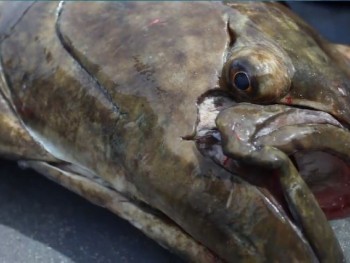 The North Pacific Fishery Management Council, master of the nation’s most valuable fishing region, decided on Dec. 10 to implement a new plan that in some ways reflects changing attitudes and economies in the North Pacific and in Alaska. The plan involves allowing guided recreational halibut fishermen to buy up commercial quota through a system called an RQE — a recreational quota entity. This differs from an existing program that allows sport guides to lease, but not buy, commercial quota. Commercial fishermen don’t welcome the change, and in fact see it as one more nail in the coffin of a historical Alaskan enterprise that is more expensive and more difficult to enter that it ever has been. Commercial fishermen think the RQE will usher in the absolute death of Southeast Alaska coastal village fleets in a matter of five years, all at the hands of the tourism behemoths that control more and more of the island economies. “This is the death of a small boat, owner-operator fishery. It’s over,” said Clem Tillion, a North Pacific fisheries fixture and longtime advocate for coastal quota ownership. “Holland America and Carnival (Cruise Line) will buy the quota and hired hands will fish it, and the small boat fleet out of villages is gone.” Read the article here 13:55
The North Pacific Fishery Management Council, master of the nation’s most valuable fishing region, decided on Dec. 10 to implement a new plan that in some ways reflects changing attitudes and economies in the North Pacific and in Alaska. The plan involves allowing guided recreational halibut fishermen to buy up commercial quota through a system called an RQE — a recreational quota entity. This differs from an existing program that allows sport guides to lease, but not buy, commercial quota. Commercial fishermen don’t welcome the change, and in fact see it as one more nail in the coffin of a historical Alaskan enterprise that is more expensive and more difficult to enter that it ever has been. Commercial fishermen think the RQE will usher in the absolute death of Southeast Alaska coastal village fleets in a matter of five years, all at the hands of the tourism behemoths that control more and more of the island economies. “This is the death of a small boat, owner-operator fishery. It’s over,” said Clem Tillion, a North Pacific fisheries fixture and longtime advocate for coastal quota ownership. “Holland America and Carnival (Cruise Line) will buy the quota and hired hands will fish it, and the small boat fleet out of villages is gone.” Read the article here 13:55
Wespac Still Pushing Obama To Lift Marine Monument’s Fishing Ban
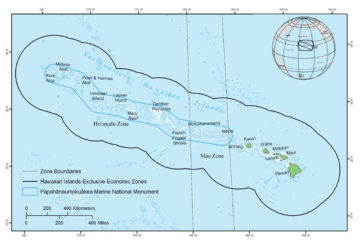 With President Barack Obama set to arrive Friday for vacation on Oahu, the Western Pacific Regional Fishery Management Council is making another push for his administration to ease the anticipated impacts of the newly expanded on Hawaii’s $100 million commercial fishing industry. Wespac Executive Director Kitty Simonds and Chair Ed Ebisui Jr. have asked the president to delay implementation of the commercial fishing prohibition for five years, pointing out how there’s a precedent for phasing in such bans. Using his executive authority under the Antiquities Act, Obama signed a proclamation in August to quadruple the size of Papahanaumokuakea around the Northwestern Hawaiian Islands. The commercial fishing ban took effect immediately. Read the rest here 13:07
With President Barack Obama set to arrive Friday for vacation on Oahu, the Western Pacific Regional Fishery Management Council is making another push for his administration to ease the anticipated impacts of the newly expanded on Hawaii’s $100 million commercial fishing industry. Wespac Executive Director Kitty Simonds and Chair Ed Ebisui Jr. have asked the president to delay implementation of the commercial fishing prohibition for five years, pointing out how there’s a precedent for phasing in such bans. Using his executive authority under the Antiquities Act, Obama signed a proclamation in August to quadruple the size of Papahanaumokuakea around the Northwestern Hawaiian Islands. The commercial fishing ban took effect immediately. Read the rest here 13:07
NMFS Seeks Public Comment-Proposed Rule to Require Turtle Excluder Device Use for Skimmer Trawls, Pusher-Head Trawls, and Wing Nets (Butterfly Trawls)
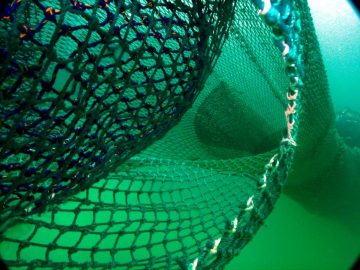 More shrimp fishermen would have to use nets equipped with turtle escape hatches, to prevent sea turtle deaths, under proposed new federal rules. The National Marine Fisheries Service wants to require more shrimp fishermen to use “turtle excluder devices.” The devices are metal grates that allow turtles to escape the boats’ nets. The fisheries service announced the proposed rules Thursday. They will be subject to a public comment process through mid-February. Thursday was the deadline for the federal government to propose regulations to protect turtles under a settlement with the conservation nonprofit Oceana. Oceana sued the government in April 2015, arguing that government estimates indicate that more than 500,000 sea turtles get caught in shrimp nets each year, and more than 53,000 of them die. Link NMFS Seeks Public Comment for Proposed Rule Click here 11:39
More shrimp fishermen would have to use nets equipped with turtle escape hatches, to prevent sea turtle deaths, under proposed new federal rules. The National Marine Fisheries Service wants to require more shrimp fishermen to use “turtle excluder devices.” The devices are metal grates that allow turtles to escape the boats’ nets. The fisheries service announced the proposed rules Thursday. They will be subject to a public comment process through mid-February. Thursday was the deadline for the federal government to propose regulations to protect turtles under a settlement with the conservation nonprofit Oceana. Oceana sued the government in April 2015, arguing that government estimates indicate that more than 500,000 sea turtles get caught in shrimp nets each year, and more than 53,000 of them die. Link NMFS Seeks Public Comment for Proposed Rule Click here 11:39
Fishery Council Sends Letters to Obama on Impacts of Marine National Monuments
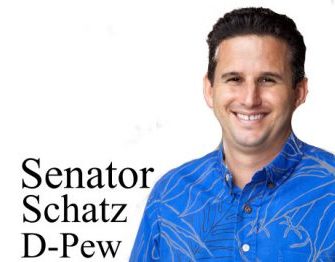 The Western Pacific Regional Fishery Management Council is hopeful that when President Obama arrives in Honolulu tomorrow, he will acknowledge the $100 million commercial fishing industry in Hawai‘i and the impacts on that fishery by his expansions of the Papahanaumokuakea Marine National Monument (MNM) in the Northwestern Hawaiian Islands (NWHI) and the Pacific Remote Islands MNM, which includes nearby Johnston Atoll. The value of the Hawaii longline fishery is excess of $300 million when factoring in retail markets and support industries and their employees. “The push for the monuments was driven not by popular demand but by a Washington, DC-based environmental organization, the Pew Environment Group, which has had the ear of successive presidents,” explains Council Chair Edwin Ebisui Jr. Now there is talk about overlaying the monument status with a National Marine Sanctuary designation.” Read the WPFMC press release here 09:41
The Western Pacific Regional Fishery Management Council is hopeful that when President Obama arrives in Honolulu tomorrow, he will acknowledge the $100 million commercial fishing industry in Hawai‘i and the impacts on that fishery by his expansions of the Papahanaumokuakea Marine National Monument (MNM) in the Northwestern Hawaiian Islands (NWHI) and the Pacific Remote Islands MNM, which includes nearby Johnston Atoll. The value of the Hawaii longline fishery is excess of $300 million when factoring in retail markets and support industries and their employees. “The push for the monuments was driven not by popular demand but by a Washington, DC-based environmental organization, the Pew Environment Group, which has had the ear of successive presidents,” explains Council Chair Edwin Ebisui Jr. Now there is talk about overlaying the monument status with a National Marine Sanctuary designation.” Read the WPFMC press release here 09:41
Research reveals black gill kills shrimp
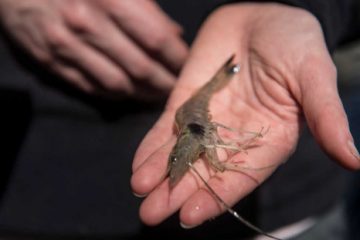 A disease that’s crippling the shrimp industry may be doing more damage than originally thought. Researchers in our region have made new findings about black gill disease, this as the industry is still rebounding from the worst shrimp harvest in Georgia history. The latest findings from scientists with the University of Georgia’s Skidaway Institute of Oceanography is unsettling. It reveals black gill may continue to push the shrimp industry into the red. “We’ve observed in controlled laboratory situations, mortality events, death of shrimp, that could only be caused by them having black gill. We’ve removed all other predators, uh, we have control groups where they don’t die, so it’s not something else in the water, but the ones with the black gill are dying.” said Dr. Marc Frischer with the UGA Skidaway Institute of Oceanography. Video, read the story here 08:58
A disease that’s crippling the shrimp industry may be doing more damage than originally thought. Researchers in our region have made new findings about black gill disease, this as the industry is still rebounding from the worst shrimp harvest in Georgia history. The latest findings from scientists with the University of Georgia’s Skidaway Institute of Oceanography is unsettling. It reveals black gill may continue to push the shrimp industry into the red. “We’ve observed in controlled laboratory situations, mortality events, death of shrimp, that could only be caused by them having black gill. We’ve removed all other predators, uh, we have control groups where they don’t die, so it’s not something else in the water, but the ones with the black gill are dying.” said Dr. Marc Frischer with the UGA Skidaway Institute of Oceanography. Video, read the story here 08:58






